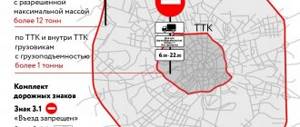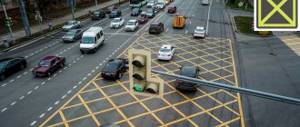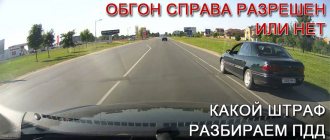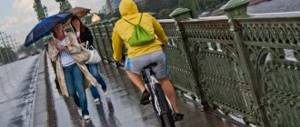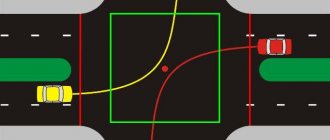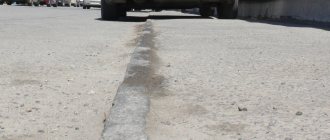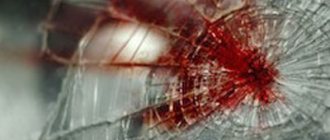Meaning of sign and variety
The sign has a digital designation of 5.5 in the traffic rules. This means the following - the road or roadway, which is located immediately behind this sign, has one-way (hereinafter also referred to as unidirectional) traffic. Simply put, there is no oncoming lane (it is located somewhere else).
Like almost all prescriptive signs, this one is designed as a square with a blue background, inside of which there is a white arrow pointing upward (see picture).
There are also subspecies 5.5:
- 5.7.1 – means that the road located to the right of the motorist has unidirectional traffic;
- 5.7.2 - means that on the road located to the left of the motorist, traffic is carried out exclusively in one direction.
These signs differ only in the direction of the white arrows. The shape of these signs is rectangular, the background is blue.
There is also an end of road sign (5.6), indicating the end of a section of road with traffic in one direction only. Immediately after this sign, two-way traffic begins - the left side of the road automatically becomes the oncoming side (unless otherwise regulated by sign 5.15.7 or road markings).
Expert opinion
Artemyev Dmitry
Experience as a forensic expert in the field of automotive technical examination for more than 2 years, more than 3 years of work in the field of insurance disputes, appealing guilt in road accidents.
Ask a Question
Did you know? Additionally, the start of two-way traffic may be indicated by warning sign 1.21.
5.6 looks like 5.5 - the only difference is that the first one has a diagonal red line (see photo).
There is also a 3.1 index (the so-called “Brick”). It is installed on the opposite side of a unidirectional road. Simply put, if the driver passes under the “brick”, then the traffic flow will meet him halfway. Route vehicles can enter under the “brick”, but an additional sign must be installed for them - 5.11.1.
Penalty for driving against one-way traffic – expert’s answer:
Responsibility
If it turns out that you did not see the sign for exiting the roadway with the effect of sign 5.5 and were moving in the opposite direction, this will be classified as driving in the oncoming lane. The violation is quite serious and entails serious liability.
Article 12.16 part 3 of the Code of Administrative Offenses states that a motorist for driving in the opposite direction in an area where sign 5.5 is in effect faces two possible penalties.
- Fine up to 5 thousand rubles.
- Deprivation of the right to drive a vehicle for a period of 4 to 6 months.
As practice shows, the majority of justices of the peace choose the second option. There are several good reasons for this.
The first reason is that the law does not require the imposition of a fine in any specific cases. The judges themselves, for the most part, consider driving into the oncoming lane a rather serious violation, which can lead to very disastrous consequences for other road users. And finally, with the legislative amendments of 2016 that came into force, each car owner in the first 20 days can pay only half of the fine, that is, in this case, 2,500 rubles. This fundamentally does not suit representatives of the judiciary, since they consider the punishment too light for such a serious offense. The situation will be similar if you drive under a brick. It is unlikely that the judge will consider it necessary to impose a fine for such a violation.
Arrangement rules
The placement of signs is carried out in accordance with GOST 52289-2004.
Some excerpts from there:
- 5.5 may not be installed to mark one-way roads leading to road service facilities (for example, gas stations), as well as on roads with separate routes;
- signs 5.7.1, 5.7.2 may not be installed near exits from courtyards and other adjacent territories, when entry there is possible only from roads indicated by sign 5.5;
- warning sign 1.21, signaling the start of two-way traffic, is installed outside cities at a distance of 150 - 300 meters, inside populated areas - 50 - 100 meters;
- 3.1 is installed immediately before the entry ban begins (including near gas stations, where 5.5 is not specifically installed);
- some signs can be re-installed - 5.5 or 5.11.1 - for example, after intersections with a complex layout.
Travel options
When driving onto a one-way road, a citizen must consider the following:
- a one-way road can have several lanes (like a two-way road) - then you can take any convenient lane (if the one-way road is located in a populated area);
- when a one-way lane has three or more lanes, the leftmost lane can only be occupied during very heavy traffic, or when all other lanes are occupied, or for the purpose of changing lanes, or turning left, making a U-turn (in the latter case, if there is further two-way road);
- driving onto sidewalks and roadsides is prohibited;
- Before starting any maneuver, do not forget to signal with turn signals;
- a one-way road may have a dedicated bus lane (indicated by signs 5.11.1, 5.13.1, 5.13.2) - entering this “dedicated lane” is prohibited.
Driving on one-way traffic fine
4 tbsp. 12.15 Code of Administrative Offenses of the Russian Federation). If the driver commits it again, he will be deprived of his driving privileges for a year. If an administrative offense is recorded by special technical means operating automatically and having photo and video recording functions, the fine will be 5,000 rubles. (Part 5 of Article 12.15 of the Code of Administrative Offenses of the Russian Federation). If an offense is detected by technical means, punishment is imposed on the owner of the car, regardless of who was driving at the time the offense was committed. The issued decision in printed form is sent to the owner of the car by mail.
What is the penalty for entering a one-way lane?
You should always use your turn signals to let other road users know what you intend to do. They cannot know your intentions unless you tell them by giving early and adequate signals. It is also important to remember that providing a signal does not mean that other road users have to give way to you or that you can automatically change direction without caring or giving way.
In each case, you must give sufficient warning of your intention to change direction so that other drivers, motorcyclists, cyclists and pedestrians will act on your signal. If you leave a stationary position on the side of the road, you must signal at least five seconds in advance to give sufficient warning to other road users, especially cyclists.
Departure methods
When the motorist saw sign 5.6, then after 150–300 meters outside the city (50–100 meters inside the settlement) the one-way road will end, so you need to prepare to leave it.
Important! 5.6 may not be installed if the total length of a one-way road is less than 100 meters, or if there is a T-shaped intersection at the end of its operation, or with a roundabout.
The departure rules are simple:
- when you need to continue driving in a forward direction, you should drive in the same lane as you were driving on a one-way road - the main thing is not to end up in oncoming traffic;
- if necessary, go to the right, you should give the appropriate turn signal, take the far right lane (paragraph 2 of clause 8.6 of the traffic rules), let pedestrians cross the roadway pass, and finally turn so that you are also in the far right lane;
- if you need to go left, you should take the far left lane (taking into account that the road will become two-way only after the intersection, either immediately after installing 5.6, or 150–300 (50–100 meters) after 1.21), turn on the left turn signal, let cars pass , moving straight or to the right, and, finally, turn so as not to end up in oncoming traffic (immediately after the left turn, you can enter any passing lane - not necessarily the far right one).
Rules for driving on a one-way road
Not every driver of a vehicle knows how to enter this type of road correctly, which often leads to violations. To avoid this, I suggest considering all options for proper entry.
When driving on a two-way road, traffic becomes one-way. This is the simplest option; here you don’t really need to worry about the correct movement. That is, whichever lane you were driving in, continue in that lane.
When turning right from an intersection you enter a one-way road. As with a regular right turn, you must initially take the rightmost lane, and after completing the maneuver, you can move either in the left or right lane, since the road is one-way.
When turning left from an intersection you enter a one-way road. The rules are identical to the previous maneuver, only before turning you need to take the far left lane, which is located in your lane. It is also possible that there are tram tracks, then the turn must be made from them. This is stated in paragraph 2 of paragraph 8.5 of Chapter 8 “Start of movement, maneuvering” of the traffic rules.
If there are tram tracks in the same direction on the left, located at the same level as the roadway, a left turn and a U-turn must be made from them, unless signs 5.15.1 or 5.15.2 or markings 1.18 prescribe a different movement order. In this case, there should be no interference with the tram.
Paragraph 2 clause 8.5 chapter 8
Turn onto a road with a dedicated lane for public transport. To perform this maneuver, we look at the above points, but you should not get into oncoming traffic for public transport.
The turn must be carried out in such a way that when leaving the intersection of roadways the vehicle does not end up on the side of oncoming traffic. When turning right, the vehicle should move as close as possible to the right edge of the roadway.
Clause 8.6 of Chapter 8 “Starting movement, maneuvering” of traffic rules
Stopping and parking
Stopping and parking of vehicles on roads intended for one-way driving only is carried out in accordance with the general rules specified in Section 12 of the Traffic Rules:
- The vehicle must be parked on the side of the road, and when there is no shoulder, it is allowed to be parked along the edge of the roadway;
- stopping and parking for passenger cars less than 3500 kg are allowed both on the right and on the left (only in populated areas);
- trucks weighing more than 3500 kg may stop on the left solely for the purpose of loading and unloading;
- when there is less than 3 meters between the stopped vehicle and the opposite edge of the roadway, stopping or parking is prohibited;
- you also cannot stop or stand closer than 15 meters from the stopping places of route vehicles and closer than 5 meters in front of pedestrian crossings;
- In addition, these actions are prohibited when the corresponding signs are 3.27, 3.28, 3.29, 3.30.
